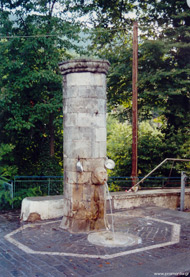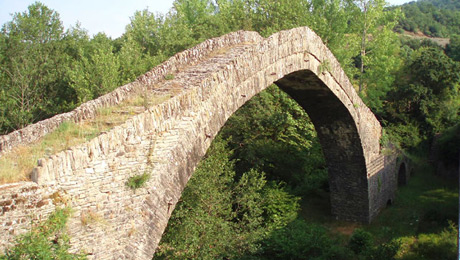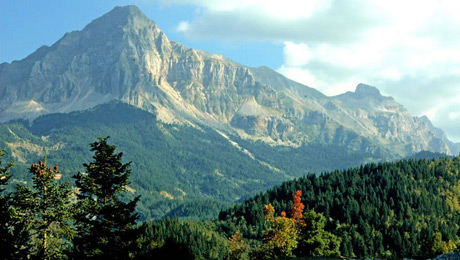Picture: www.clickatlife.gr
Pramanta is the main village of the Tzoumerka region (www.clickatlife.gr/story/taksidi/tzoumerka-enas-epigeios-paradeisos-stin-pindo?id=2106463) and is the largest with a population of about 1,500 inhabitants. It is located amphitheatrically at an altitude of 840 m at the foot of Mount Strongila (2107 m) in the central Pindus Mountain Range. The village is 65 km southeast of Ioannina and 70 km northeast of Arta.
The village was probably founded in the mid-15th century by settlers - farmers, and, later, persecuted refugees, mainly from Epirus, settled there. The village has a health service, schools, a library, shops, taverns, bars and guesthouses.
 Pramanta's beauties of nature are innumerable. In the centre of the village you will see the ancient plane tree and the historical fountain Arapis, as well as the village's most prominent ornament - the church of Agia Paraskevi. You can enjoy local Epirus specialties in the cafes and taverns of the village, such as grilled meats, round loaves and pastries.
Pramanta's beauties of nature are innumerable. In the centre of the village you will see the ancient plane tree and the historical fountain Arapis, as well as the village's most prominent ornament - the church of Agia Paraskevi. You can enjoy local Epirus specialties in the cafes and taverns of the village, such as grilled meats, round loaves and pastries.
Mountainous relief, traditional houses, opulent forests, rivers and waterfalls make up a charming wild landscape and enchant visitors. However, most importantly, one must get acquainted with the hospitable locals who combine trade, spirituality and culture.
You can use Pramanta as a starting point for excursions in the area and to other villages of Tzoumerka. One of the places you should not miss is the beautiful Anemotrypa Cave (or, Wind-hole) (http://www.pramanta.gr/anemotrypa/en/index_en.htm), which is located near Pramanta at an altitude of 900 m. In 1960, speleologist Anna Petrochilou studied the cave, and, today, 270 m of a total 350 m length can be visited. The cave has three levels with impressive stalactites and stalagmites, waterfalls, an underground river, lakes and beautiful colours.
There are also interesting churches and monasteries in the area, such as the historic Agia Paraskevi Monastery, the church of Asproklisia Monastery, as well as Kipina Monastery, which is one of the most impressive monasteries in Epirus, situated on a high rock.

The sights of the area also include the largest arched bridge in the Balkans - the bridge of Plaka, the traditional watermill of Christi, the mountain shelter at Isioma (www.katafigiopramanton.gr), the Skala medicinal springs, and more. Lovers of mountain walks will find many trails leading to the peak of Strongila.
The Tzoumerka region boasts a lot of forests with rich flora and fauna. There is also the Arahtos River. Many tributaries of Aheloos and Araktosrom spring from the Atamanika Mountains. There are a lot of alternative tourism offices near the rivers, offering some of the best routes for rafting and kayaking in Greece.

How to get there:
By car: from Athens - over the bridge of Rio-Andirio along the way to Vourgareli-Agnanda or through Trikala-Mesohora. The distance is 403 km in the first case, and slightly longer through Trikala.
Where to stay:
Consult the sites http://www.pramanta.gr/en/index_en.htm and www.tzoumerka.travel/diamoni.htm. Near Pramanta, towards Melisourgi, there is a branch leading to the shelter.